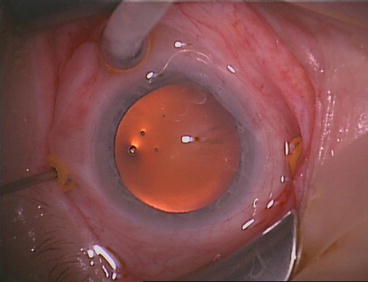(1)
St. Johns, FL, USA
(2)
Helen Keller Foundation for Research and Education, International Society of Ocular Trauma, Birmingham, AL, USA
(3)
Consultant and Vitreoretinal Surgeon, Milos Eye Hospital, Belgrade, Serbia
(4)
Consultant and Vitreoretinal Surgeon, Zagórskiego Eye Hospital, Cracow, Poland
The function of the speculum is to keep the lids securely apart during the operation and to prevent the eyelashes from contaminating the operative field (see Sect. 18.1).
19.1 General Considerations
Pearl
The selection of the proper type of speculum does not seem to be an important issue until the surgeon is forced to struggle with it intraoperatively.
If the lids are not widely separated, the visco may get wiped off the corneal surface as the surgeon rotates the eye.
Conversely, if the patient’s orbital fissure is very small, forcing the speculum wide open will have the opposite effect: The placement of the cannulas, and finding them during the operation,3 will be more difficult (see Figs. 19.1 and 21.7).
The speculum is able to prevent being closed by the squeezing patient.4
Wire-type speculums with no locking mechanism5 should be used only if the patient is under general anesthesia when squeezing of the lids does not occur. They work as a spring, whose action is easily overpowered by the orbicularis muscle.

Fig. 19.1
Narrow palpebral fissure, widely opened speculum. It may be impossible to find the superonasal cannula when the surgeon wants to insert an instrument through it in the dark: a double-blind effort, according to the gallows type of humor. The cannula keeps sliding under the upper lid
Stay updated, free articles. Join our Telegram channel

Full access? Get Clinical Tree


